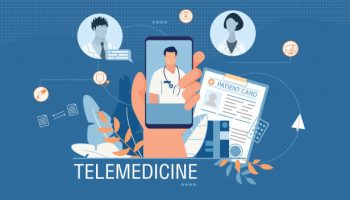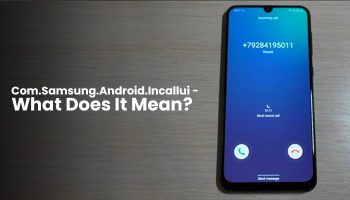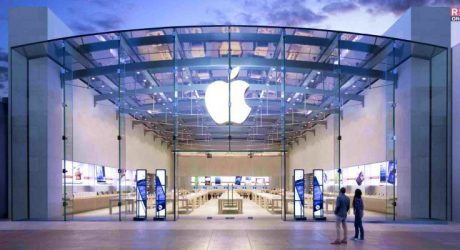The ongoing pandemic has devastating roots in every industry, whether in finance, education, or healthcare. Every sector of the economy is suffering, and in some worst cases, the companies declare themselves bankrupt and eventually collapse.
The current myths blooming throughout the pandemic of maintaining social distancing and sanitization often force individuals to remain home. This constrains them as much as possible and prevents them from attending social gatherings.
Even during this pandemic, the most flourishing industries are the telemedicine and healthcare apps industries. Telemedicine app development is one of the areas where the stakeholders are working closely.
Telemedicine provides a platform for doctors and healthcare professionals to review, evaluate, and diagnose patients’ reports using telecommunication technology.
On the other hand, Telehealth is a much broader term than telemedicine. It includes all remote healthcare services as well as non-healthcare services. Overall, it can be said that telemedicine is a sub-branch of Telehealth.
Pursuing Individuals To Use Telemedicine Apps

The ultiate objective of the telemedicine app development is that to generate revenue from apps, one needs to persuade individuals to use them. Moreover, individuals will use an app when they like it and when they find a purpose in using it.
Medical, healthcare, or wellness apps provide substantial learning from games. The key factor to including this game is to cheer an individual after playing a level of the game. Here, an individual expects a discount voucher or something for free.
Other than this, the real benefits of using the app and better healthcare facilities can help an app achieve results.
Six Strategies To Monetize Your Telemedicine Apps

Telemedicine app development has unfolded new opportunities. At the same time one can monetize them. However, here we discuss some of the core strategies through which you could monetize your telemedicine apps.
1. Gamification
Gamification is the first technique widely used by telemedicine app development. It finds integration in every type of app, whether in finance, E-learning, or healthcare.
In addition, the games’ high flexibility in the apps’ environments makes them more user-friendly. Thus, the app’s basic idea is the basis of its design. Moreover, the user participates and achieves some levels based on the story the developers tell.
Some apps remind adults of their medicines, daily exercise, and doctor visits. They even remind individuals of their fitness status after weeks of regular exercise and medicines.
Telemedicine app development experts can try to include more innovative techniques. For example, they can include free advice from doctors, free prizes, and discounts in the same app.
Besides, the apps further provide patients with a platform where they can set their own goals and track their progress. It can help increase their engagement with the app.
2. Free Gifts
The most influential word in the era of marketing:- FREE. This bold word catches the eye of every individual. Expensive or complex things are mostly ignored.
In addition, free weight and calorie calculators can be provided to daily app users. This motivates an individual to use the app more frequently. The free advice consultation and tips reduce their risks of getting infected by major diseases.
The daily users of the telemedicine apps and strict followers of their routine qualify for a free medicine box. These boxes contain personalized medicines for a week.
Ultimately, providing free services motivates individuals to use apps more efficiently and frequently. Telemedicine app development stakeholders are taking all these into consideration while going forward with the development work.
3. Cross-Selling And Promotions
To generate revenue from free apps, app developers should upgrade the products and services of the app without interrupting the users.
Such a mechanism must be carried out without targeting customers to purchase a product or service, which diminishes customer satisfaction with the app.
In addition, the motive is to create a good platform to enhance the sales of the product or service. Hence, such things must appear as favourable mentions rather than products to sell.
Such cross-selling platforms can utilize customers’ existing data and, according to their needs, personalize the offers. It can be counted as a technological way to satisfy customers and take their needs into consideration. If an individual intends to buy health supplements online, then could use telemedicine apps.
4. Data Gathering
The world is dominated by big data and artificial intelligence. Big data on patients is an asset as it includes everything associated with the patient and their health.
Major pharmaceutical companies and other companies in such sectors ask for such data. This is the best-proven way to monetize an app.
When the app owners make such data available, pharmaceutical companies, hospitals, Fitness and wellness trainers, and centers become the interested parties.
5. Contact Points And Channels
The diversified perspectives and the extension of apps to websites, synchronizing email, and other platforms transmit a direct message back to the same app.
An app must use geo-tracking and Geo-locations to inform users about their surroundings, which ultimately benefits the app. Such apps work as long as there are ways to connect with the patient and generate revenue.
6. Revenue Models
Before developing an app, app owners and developers need to decide what revenue-generating models they will use.
A) Free Of Advertisements
Free apps are the kind of apps where users can approach and work on any part of the app freely, and sometimes, the conscious users would not mind if an advertisement pops up in between while using the app.
B) Freemium
In freemium, the app’s basic features are accessible free of cost, but when a user wants to use some features that are not basic, they are charged a certain amount of money.
The word itself is a combination of free and premium, and the app provides an option for both free and premium services based on the user’s interest.
If it provides real value and desirable outcomes to customers, they are likely to pay a certain amount of money to access premium services.
C) Paid
Users cannot use the app. They can download it free of cost from the store. However, to use it, they need to purchase a plan from the options provided.
For users who have already paid for the app, services might lose interest in the app, and app owners might end up losing their true customers.
D) In-App Purchases
Such a feature allows a user to pre-pay the bills, make medical visits to the medical centre, and pre-pay for doctor visits. It also enables users to purchase their medical supplements.
E) Subscriptions
Other than freemium and paid models. There is another model to provide an app owner with more options to generate capital.
The subscription model is mostly used by health and fitness centres where users are reminded of their membership getting over and the ways to renew the subscription.
F) Sponsorship
Every app owner uses one of the latest models based on the motive for using an app. The user converts the app’s points and rewards into a real reward.
In the medical and healthcare industry, it acts as a bonanza as it attracts more users, and the company gathers more data from the users, which is converted into profits by selling such data to interested parties.
G) Content Monetization
One key requisite for the healthcare industry is pre-screened and certified content. Although there is an abundance of information on the Internet, it must be current and supported by science.
One of the most effective monetization strategies for effective healthcare applications is charging a fee to access the content.
Furthermore, accessing reliable information on different healthcare topics may interest patients and professionals alike.
I) Partnerships And Promotions
To implement the particular approach, you need to cooperate with the different organizations who are eager to market their product with the help of your application.
For example, you may collaborate with a local pharmacy or medical facility, wellness professional, or independent health provider to extract mutual advantage.
Customers will benefit from your partnership because they will have access to more wellness and health-related products and services.
How Do Top Telemedicine Apps Make Money?

The discussion on effective monetization strategies is null and void without giving a look at how the top Health applications make money.
Doctor On Demand, one of the top telemedicine brands, generates revenue from both the healthcare providers and patients. The care receivers pay a consultation fee, and the healthcare providers also pay a charge as a commission on the fees.
Amwell is another US-based telemedicine service that connects doctors and patients through secure video chats.
The Amwell service offers on-demand appointments 24/7. It has prepared a great medical service ecosystem by partnering with over 55 health carriers and more than 2000 hospitals.
Summing Up
Telemedicine app development experts have analyzed a similar pattern in user behavior, as some users stick to free services and some move to premium packages.
Moreover, most patients use this application to remind them of their medicines, schedule appointments with doctors, and get their prescriptions.
Creating an app where users can use premium services that are chargeable and affordable is a tedious task for developers and owners.
Even an app’s design plays a pivotal role in attracting new users and maintaining the same level of interest and excitement for existing users.
App owners and developers must design and develop apps that are convenient, affordable, and appealing to users to capture a large share of the market.
Additional Reading:




























